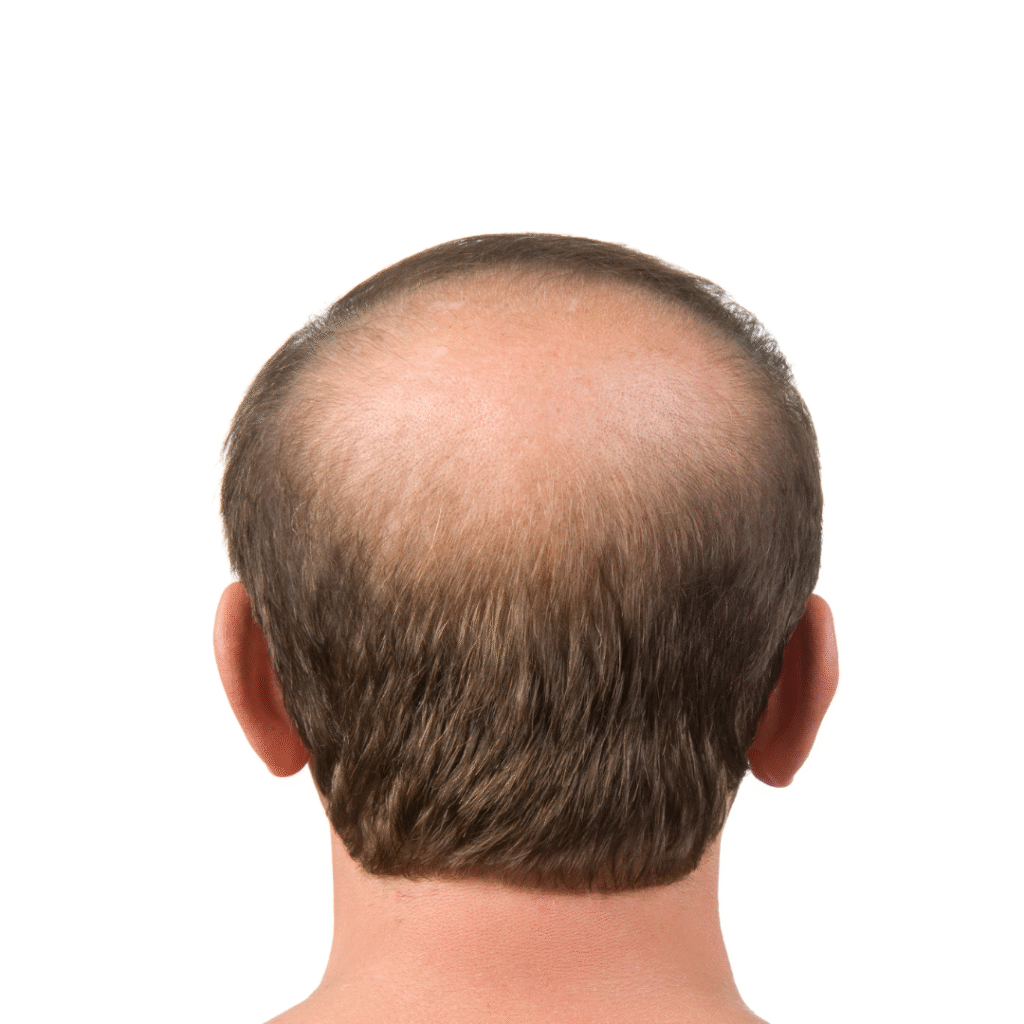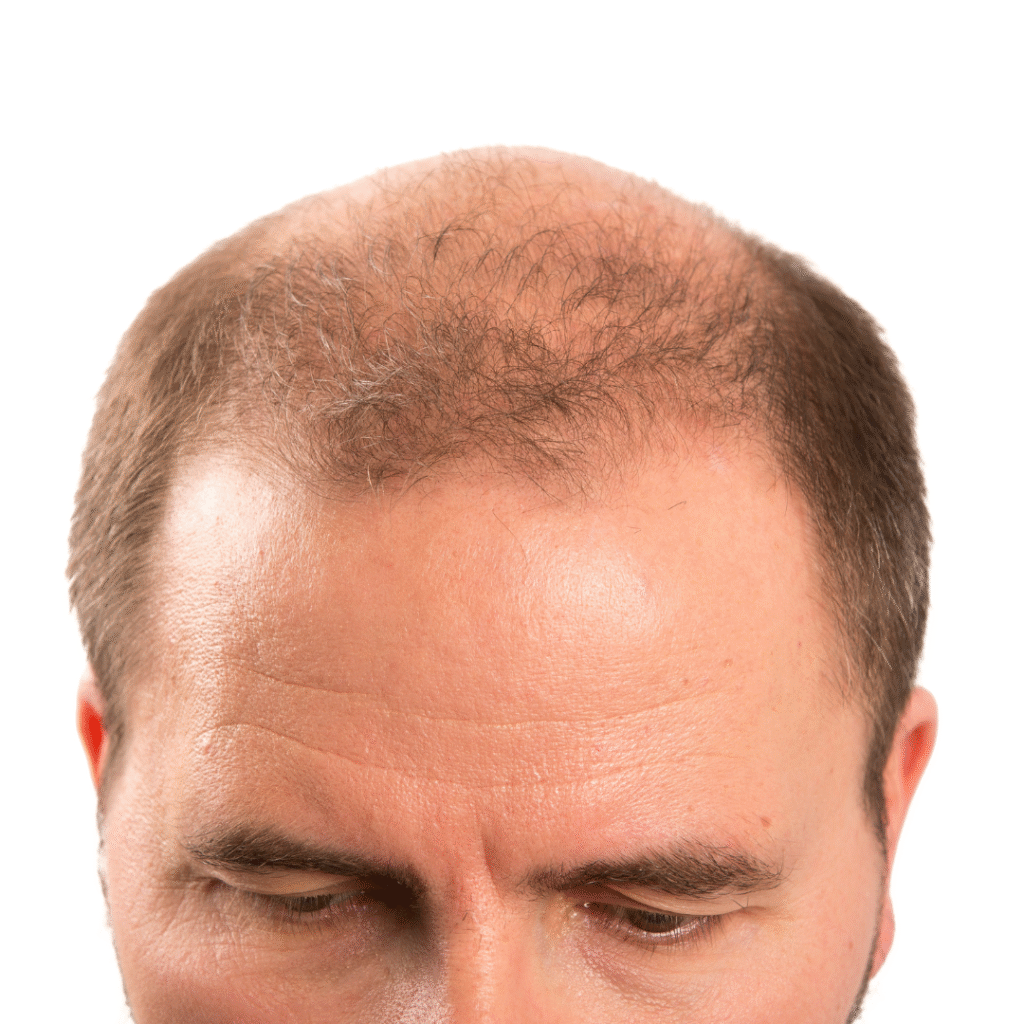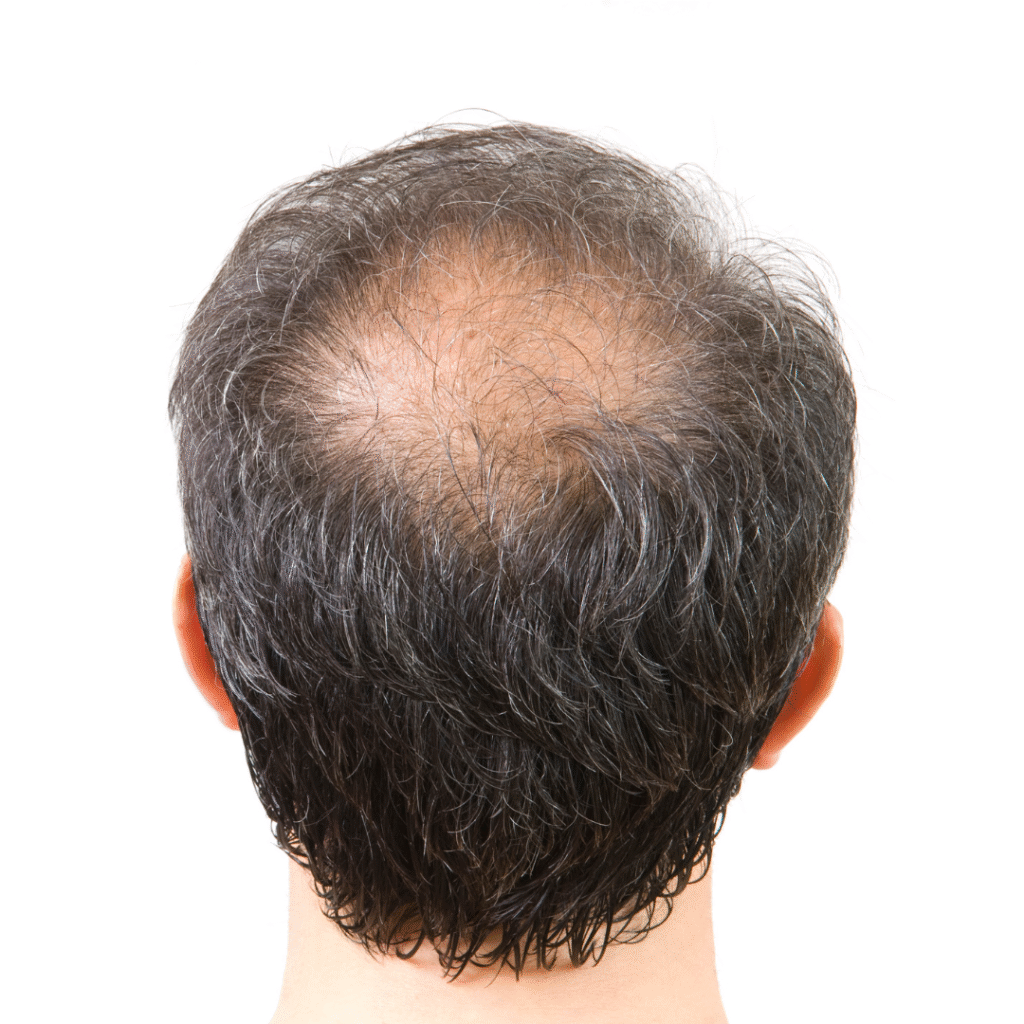

What is Male Pattern Baldness?
Male Pattern Baldness, also known as Androgenetic Alopecia, is a hereditary condition that primarily affects men. It is the most prevalent cause of hair loss and typically follows a predictable pattern. As men age, hair follicles become sensitive to dihydrotestosterone (DHT), a hormone derived from testosterone, causing them to shrink. This leads to a gradual thinning of hair and, in some cases, complete baldness.
Symptoms and Causes
Symptoms of Male Pattern Baldness
Male pattern baldness, also known as androgenetic alopecia, is the most common cause of hair loss in men. The symptoms usually appear gradually and include:
Receding hairline starting at the temples, forming an “M” shape.
Thinning hair on the crown (top of the head) that slowly expands outward.
Progressive hair loss that makes the scalp more visible.
Reduced hair density with finer, shorter strands replacing thicker hair.
Bald patches that eventually merge, leaving partial or complete baldness.
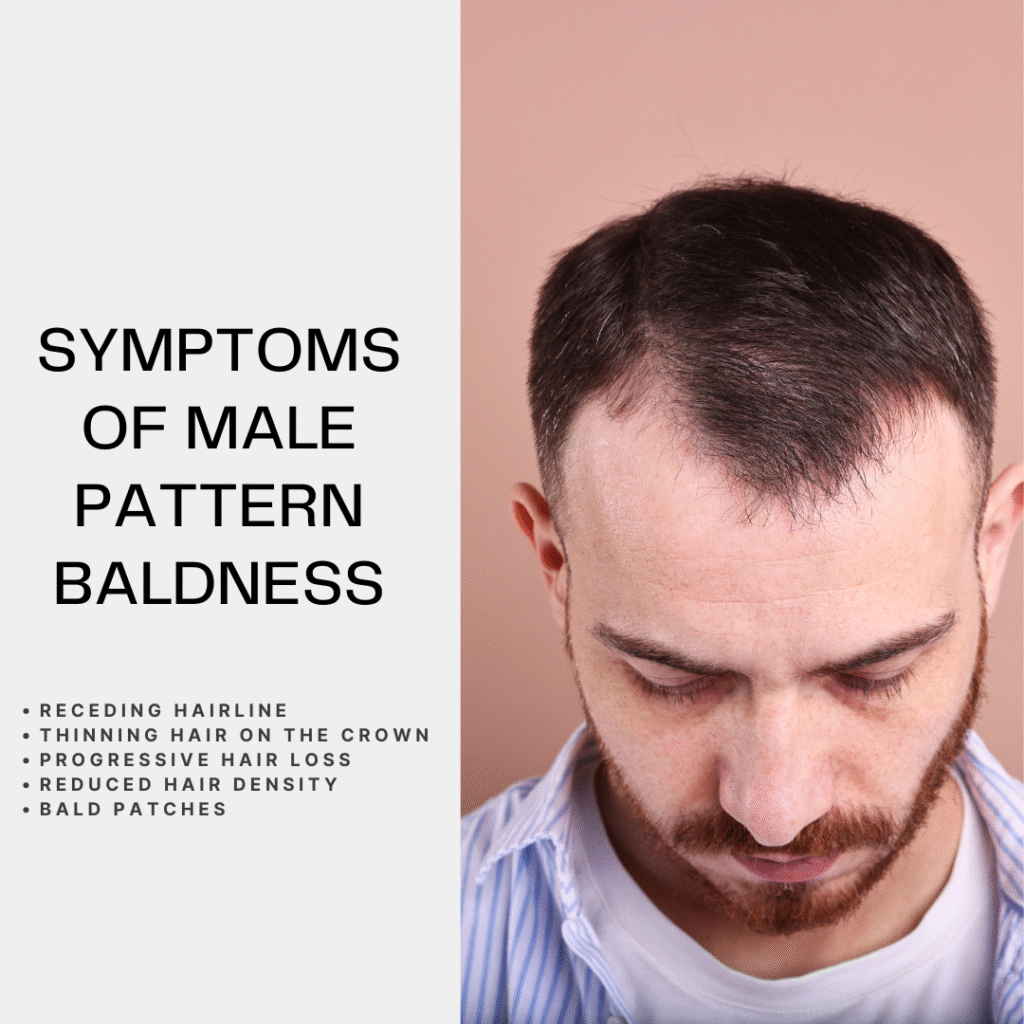
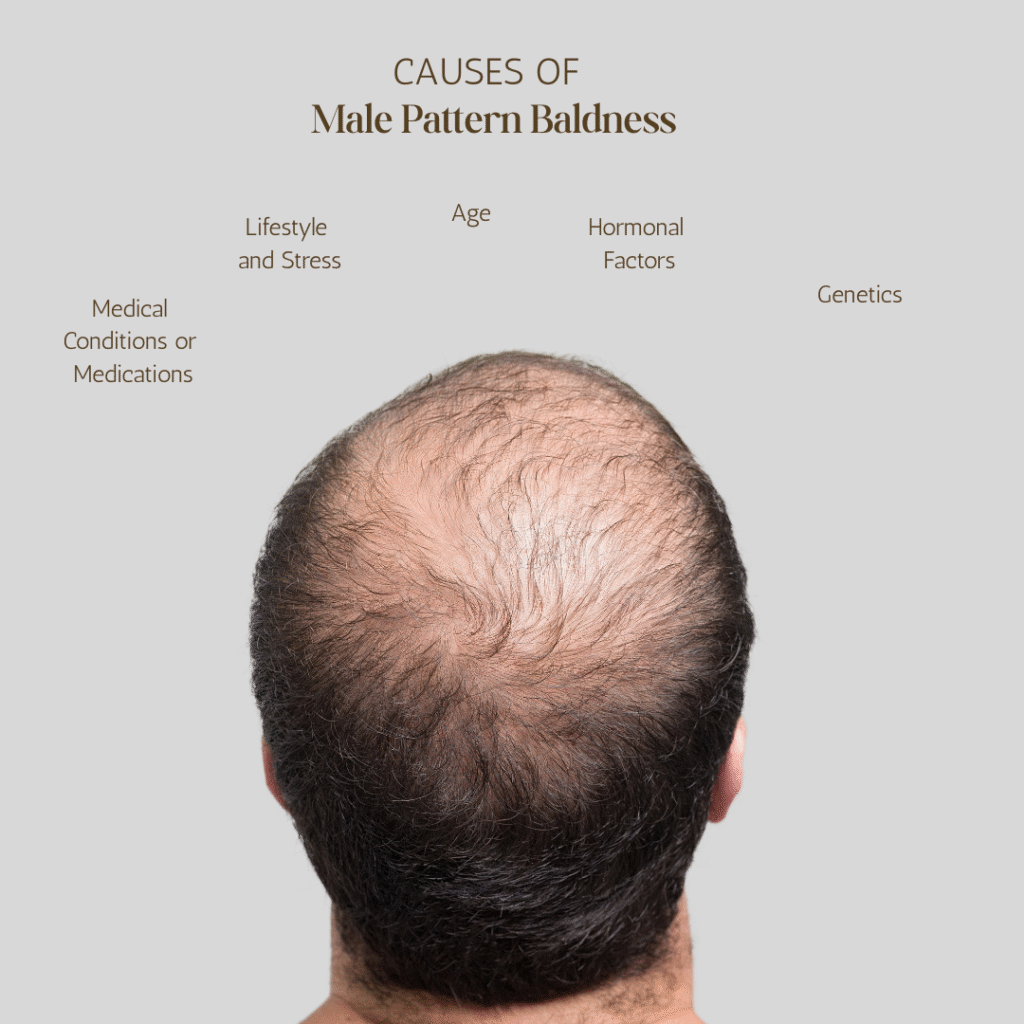
Causes of Male Pattern Baldness
Male pattern baldness (androgenetic alopecia) happens mainly due to a mix of genetics and hormones. The common causes include:
Genetics – A family history of baldness increases the risk significantly.
Hormonal Factors – High sensitivity to dihydrotestosterone (DHT), a hormone that shrinks hair follicles and shortens the growth cycle.
Age – Hair growth naturally slows with age, making baldness more noticeable over time.
Lifestyle and Stress – Poor diet, stress, and lack of sleep can worsen hair thinning.
Medical Conditions or Medications – Certain illnesses and drugs may accelerate the process.
Types of Male Pattern Baldness
Male pattern baldness progresses in different patterns, often classified using the Norwood scale. The common types include:
Type 1: Minimal or no hair loss, with a full hairline.
Type 2: Slight recession of the hairline around the temples.
Type 3: Deeper recession at the temples, forming an “M” shape; early bald spots may appear.
Type 4: Significant thinning at the crown along with a receding hairline.
Type 5: Larger bald areas on the crown and front that start to merge.
Type 6–7: Advanced baldness, with only a thin strip of hair remaining on the sides and back.
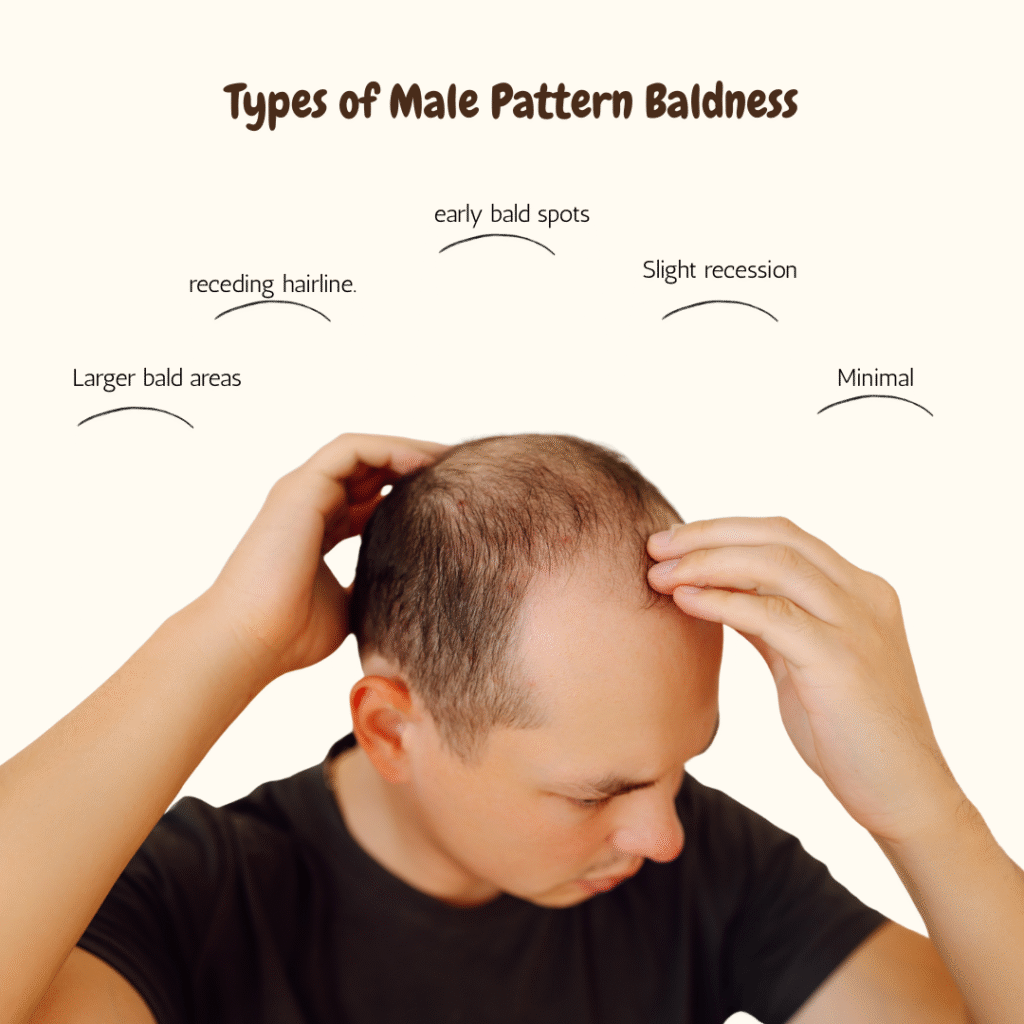
Treatment Options
Treatment for male pattern baldness focuses on slowing hair loss and promoting regrowth where possible. The most common options include minoxidil, a topical solution that stimulates hair follicles, and finasteride, an oral medication that lowers DHT levels to prevent further thinning. Advanced options like PRP therapy use growth factors from your own blood to encourage natural regrowth, while low-level laser therapy improves scalp circulation. For long-term, permanent results, hair transplant surgery such as FUE or FUT is highly effective. Along with these treatments, maintaining a healthy diet, reducing stress, and following proper scalp care can enhance outcomes.
PRP Therapy (Platelet-Rich Plasma)
Low-Level Laser Therapy
Hair Transplant Surgery
Consult a Specialist Today
Many of the techniques for preventing pimples may also be used to cure them. Eating well, avoiding stress, and not popping pimples may help manage zits and reduce their length. If your acne continues despite your best efforts, you may need prescription acne treatment. Consult your dermatologist if you’re uncertain about treatment.
FAQ's
Male pattern baldness cannot be fully reversed, but treatments like minoxidil, finasteride, and PRP therapy can slow hair loss and promote regrowth in many cases.
It can begin as early as the late teens or early 20s, but most men notice thinning between ages 25–35.
Yes, transplanted hair from donor areas is permanent, though natural surrounding hair may continue to thin over time.
A healthy diet, reducing stress, and proper scalp care can improve hair health but may not stop genetic baldness.
Most treatments like finasteride and minoxidil are safe with medical supervision, though they may cause mild side effects in some individuals.
Types of Male Pattern Baldness
Male Pattern Baldness is classified into several stages based on the pattern of hair loss. The most common types include:
- Type I: Initial thinning at the temples and hairline recession.
- Type II: Further recession of the hairline and development of a distinct “M” shape.
- Type III: Increased hair loss at the temples and deepening of the “M” shape.
- Type IV: Ongoing hairline recession with a larger bald spot at the crown.
- Type V: Continued enlargement of the crown bald spot and receding hairline.
- Type VI: Further advancement of hair loss, leaving a bridge of hair on the sides.
- Type VII: Only a rim of hair remaining on the sides and back of the head.
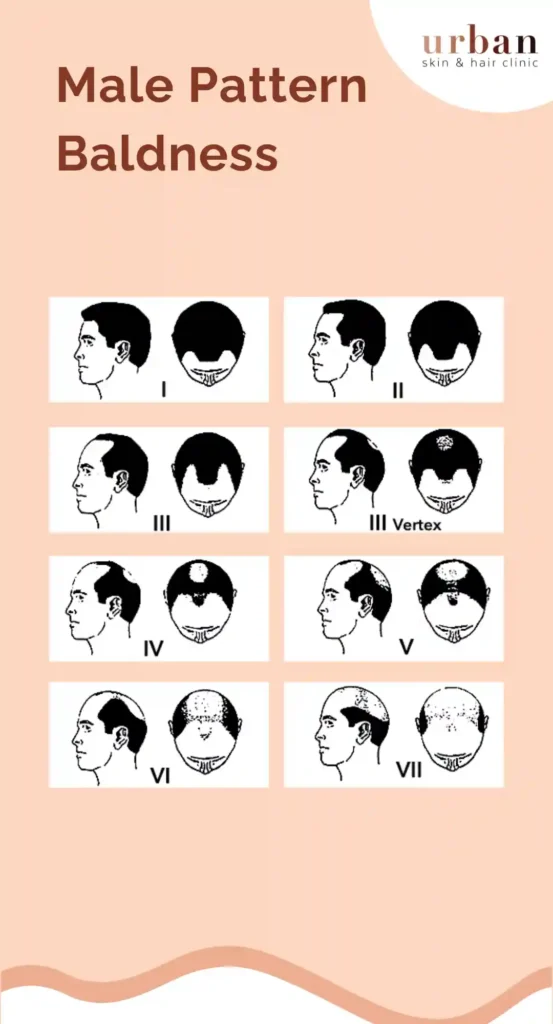
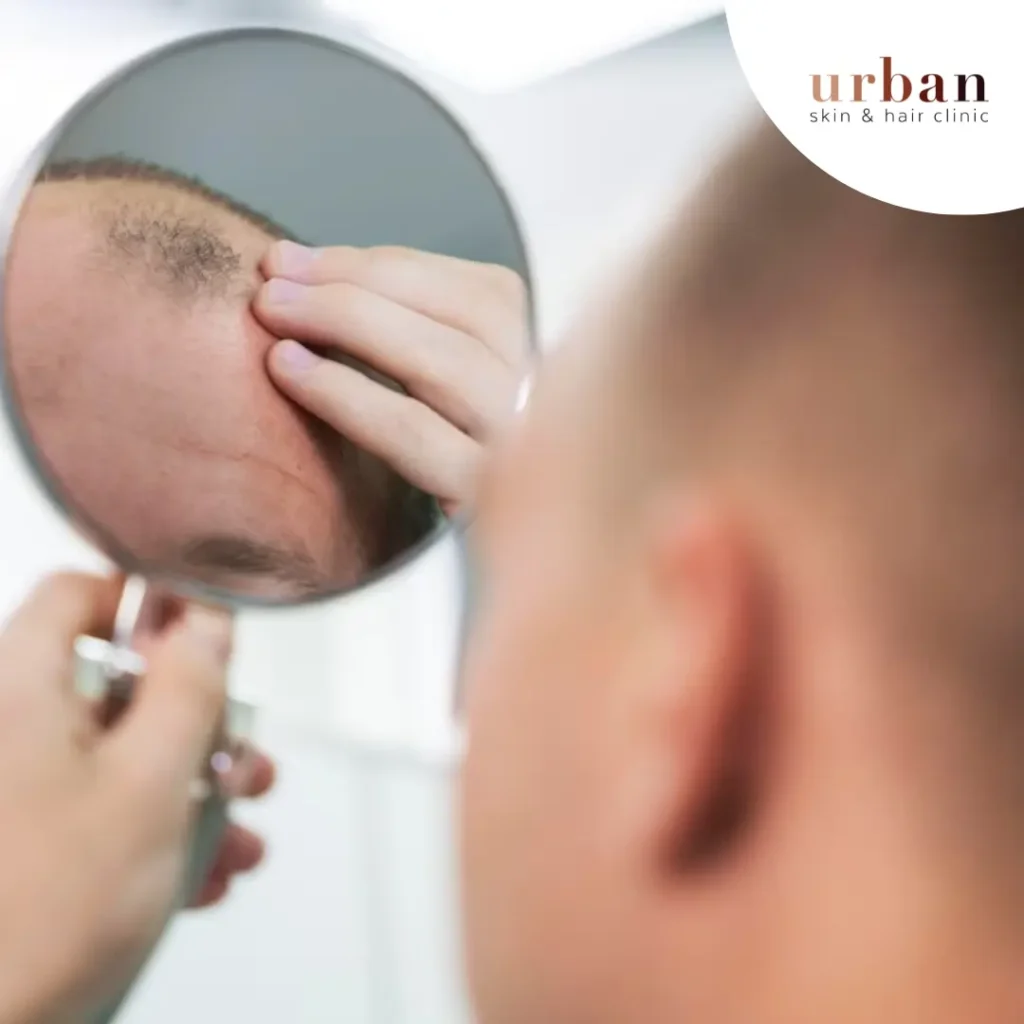
What are the Causes of Male Pattern Baldness?
While the primary cause of Male Pattern Baldness is genetic predisposition, other factors can contribute to its development, such as:
- Hormonal imbalances, particularly an increase in DHT levels.
- Age, as the likelihood of experiencing hair loss increases with age.
- Family history of male pattern baldness.
- Medical conditions or treatments that disrupt the hair growth cycle.
- Poor nutrition and vitamin deficiencies.
Signs & Symptoms of Female Pattern Baldness
Recognizing the signs of Male Pattern Baldness can help you take timely action. Common symptoms include:
- Gradual hair thinning on the top of the head.
- Receding hairline, often forming an “M” shape.
- Thinning or bald patches, especially on the crown.
- Increased hair shedding in the shower or when brushing.
- Visible scalp becoming more apparent over time.

Treatment for Male Pattern Baldness
At Urban Skin & Hair Clinic, we understand the emotional impact of hair loss and the importance of finding effective solutions. Our experienced dermatologists offer a range of treatments for Female Pattern Baldness, tailored to suit individual needs:
FDA-approved medications like minoxidil and finasteride can help slow down hair loss and promote regrowth.
PRP utilizes the body’s growth factors to stimulate hair follicles and encourage hair growth.
LLLT stimulates hair follicles through non-invasive laser technology to promote hair growth.
Hair Transplantation
Adopting a balanced diet, managing stress, and maintaining good hair care practices can support healthy hair growth.
Male Pattern Baldness can be a distressing condition, but with the right understanding and appropriate treatments, you can regain confidence in your appearance. Urban Skin & Hair Clinic is dedicated to providing personalized solutions to address your unique concerns. Reach out to us today to take the first step towards a fuller, healthier head of hair!



